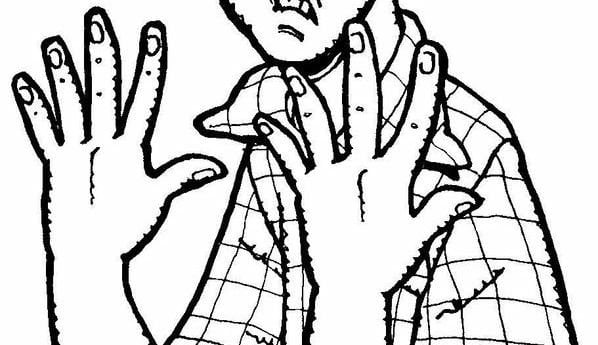 Facebook
Facebook
 X
X
 Instagram
Instagram
 TikTok
TikTok
 Youtube
Youtube

Hey Matt: Why are there so many more right-handers than left-handers? — Bicoastal, via email
Aw, phooey. Actually, when it comes to handedness, everything you know is wrong — old-wives’-tale division. Anyway, that’s what’s been decided after a century and a half of research into the subject. The only thing that science guys can agree on is that there must be a reason why 75 percent to 90+ percent of us are righties. (They can’t even agree on how many of us are on each side or exactly what qualifies as “handedness.”) So, most assume there has been some survival advantage to having the vast majority of us, regardless of geography or culture, using the same hand. Language, a fine-motor-control skill, is left-hemisphere based. Some post-docs think it’s the motor-control issue that links handedness with speech; ergo, we’re most likely right-handed, -footed, and -eyed. But a few rude researchers discovered that about half of left-handers also have language control in their left hemispheres, so there goes the theory that handedness and language team together in the brain. Lefties generally have a tough time coping with a world built for the other guys, except in the field of sports such as tennis, baseball, fencing, and boxing, where they excel. Maybe enough ancient left-handers won enough softball games or fistfights with the guy in the cave next door to keep a few lefties in our population. The thinking goes that lefties have some advantage of “surprise” over righties on sporting fields, who are used to dealing with other righties.

Number-crunchers have found some indication that handedness is at least partly inherited. But it doesn’t follow classic Mendelian patterns, so that just creates a kind of snake’s nest. Developmental brain trauma is a theory some like; lefties have suffered perhaps some in-utero damage at the time our distinct hemispheres are forming. Few takers on that speculation, though.
When the going gets tough, the tough test rats (or weasels or bears or bunnies). Animal studies indicate that many individual mammals have a preference for one paw or another, but that’s not enough to generalize to a whole population, so we’ll never know if cows are righties or lefties. Are you beginning to get the drift here? After 160 years, we don’t know squat about the origins of handedness.
So, if animal studies are useless for Bicoastal’s question, maybe we can find a professor that can outsmart the rats that eat our car wiring and tear up interiors [“Straight From the Hip,” September 7]. A kind reader referred me to a behavioral psychologist at UCSD. They run lots of rats in their experiments. Maybe it takes a PhD to outsmart the rodents.
Matthew Alice: I know of no one who has addressed this specific question, as the usual way of dealing with troublesome rodents is to trap them in the situations where they are causing the problem. Peanut butter is an extremely effective bait. Short of eliminating the critters, there is no simple answer to your question because it depends on the experience of the individual rat. Rodents are very neophobic with respect to food and will only eat a small amount of food the first time they encounter it. But once they have decided it is safe, it is hard to get them to avoid the food. One strategy would be to train a taste aversion, but this would require being able to pair some kind of toxin with what they are eating. Perhaps this could be done by coating the wiring with some kind of poison, but that is likely to be an engineering problem, not an issue of animal behavior. — Ben Williams, UCSD Professor Emeritus
Okay, fair enough. The professor’s rats aren’t the same as our familiar irritating devils, anyway. And who’d want to toodle down the street driving a car that smelled like the inside of your kid’s lunch box? So, if high-minded science can’t help, here’s some over-the-back-fence advice that sounds promising:
Hey Matt: We had a similar problem with rats nesting under our car hood. Cost us $800 in repairs for the replacement wires the rats had chewed through. Our mechanic suggested (and we did it!) putting some of those dryer softener sheets on top of the engine. The rats don’t like those sheets and moved away. It worked for us and has ever since for over two years! Hope that helps for your readers. — Chip S., Poway
Dryer sheets make the research elves sneeze, which could get pretty annoying on long trips. But it sure is a fair trade-off for $800 worth of wiring. Thanks for the tip.


Hey Matt: Why are there so many more right-handers than left-handers? — Bicoastal, via email
Aw, phooey. Actually, when it comes to handedness, everything you know is wrong — old-wives’-tale division. Anyway, that’s what’s been decided after a century and a half of research into the subject. The only thing that science guys can agree on is that there must be a reason why 75 percent to 90+ percent of us are righties. (They can’t even agree on how many of us are on each side or exactly what qualifies as “handedness.”) So, most assume there has been some survival advantage to having the vast majority of us, regardless of geography or culture, using the same hand. Language, a fine-motor-control skill, is left-hemisphere based. Some post-docs think it’s the motor-control issue that links handedness with speech; ergo, we’re most likely right-handed, -footed, and -eyed. But a few rude researchers discovered that about half of left-handers also have language control in their left hemispheres, so there goes the theory that handedness and language team together in the brain. Lefties generally have a tough time coping with a world built for the other guys, except in the field of sports such as tennis, baseball, fencing, and boxing, where they excel. Maybe enough ancient left-handers won enough softball games or fistfights with the guy in the cave next door to keep a few lefties in our population. The thinking goes that lefties have some advantage of “surprise” over righties on sporting fields, who are used to dealing with other righties.

Number-crunchers have found some indication that handedness is at least partly inherited. But it doesn’t follow classic Mendelian patterns, so that just creates a kind of snake’s nest. Developmental brain trauma is a theory some like; lefties have suffered perhaps some in-utero damage at the time our distinct hemispheres are forming. Few takers on that speculation, though.
When the going gets tough, the tough test rats (or weasels or bears or bunnies). Animal studies indicate that many individual mammals have a preference for one paw or another, but that’s not enough to generalize to a whole population, so we’ll never know if cows are righties or lefties. Are you beginning to get the drift here? After 160 years, we don’t know squat about the origins of handedness.
So, if animal studies are useless for Bicoastal’s question, maybe we can find a professor that can outsmart the rats that eat our car wiring and tear up interiors [“Straight From the Hip,” September 7]. A kind reader referred me to a behavioral psychologist at UCSD. They run lots of rats in their experiments. Maybe it takes a PhD to outsmart the rodents.
Matthew Alice: I know of no one who has addressed this specific question, as the usual way of dealing with troublesome rodents is to trap them in the situations where they are causing the problem. Peanut butter is an extremely effective bait. Short of eliminating the critters, there is no simple answer to your question because it depends on the experience of the individual rat. Rodents are very neophobic with respect to food and will only eat a small amount of food the first time they encounter it. But once they have decided it is safe, it is hard to get them to avoid the food. One strategy would be to train a taste aversion, but this would require being able to pair some kind of toxin with what they are eating. Perhaps this could be done by coating the wiring with some kind of poison, but that is likely to be an engineering problem, not an issue of animal behavior. — Ben Williams, UCSD Professor Emeritus
Okay, fair enough. The professor’s rats aren’t the same as our familiar irritating devils, anyway. And who’d want to toodle down the street driving a car that smelled like the inside of your kid’s lunch box? So, if high-minded science can’t help, here’s some over-the-back-fence advice that sounds promising:
Hey Matt: We had a similar problem with rats nesting under our car hood. Cost us $800 in repairs for the replacement wires the rats had chewed through. Our mechanic suggested (and we did it!) putting some of those dryer softener sheets on top of the engine. The rats don’t like those sheets and moved away. It worked for us and has ever since for over two years! Hope that helps for your readers. — Chip S., Poway
Dryer sheets make the research elves sneeze, which could get pretty annoying on long trips. But it sure is a fair trade-off for $800 worth of wiring. Thanks for the tip.
Comments